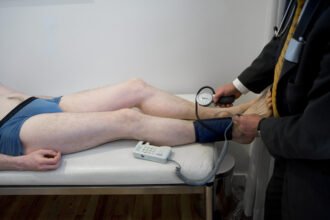Recently, television personality Rosie O’Donnell was in the headlines after suffering a heart attack. Her presentation with an acute coronary syndrome (ACS) was atypical; her symptoms were different from the traditional symptoms seen in men having a heart attack. Earlier in the day of her event, Ms O’Donnell had helped a woman from her car. That evening she blogged that “a few hours later my body hurt, and that i had an ache in my chest. both my arms were sore. everything felt bruised.”
Recently, television personality Rosie O’Donnell was in the headlines after suffering a heart attack. Her presentation with an acute coronary syndrome (ACS) was atypical; her symptoms were different from the traditional symptoms seen in men having a heart attack. Earlier in the day of her event, Ms O’Donnell had helped a woman from her car. That evening she blogged that “a few hours later my body hurt, and that i had an ache in my chest. both my arms were sore. everything felt bruised.”
Ms O’Donnell’s symptoms were persistent and she began to wonder if her symptoms might represent a heart attack. She decided to take an aspirin (a particularly good idea in her case) but continued to deny the symptoms until she consulted her physician the next day. She immediately underwent a cardiac catheterization and was found to have a 99% blockage of her left anterior descending artery (LAD). She had a stent (small metal tube to open the blocked artery) placed and is likely to recover completely.
Her case highlights one of the biggest challenges in caring for women with cardiovascular disease–lack of recognition by clinicians and denial and delay by patients experiencing the symptoms. Women in the US today account for a large number of the nearly half million deaths from CV disease and Sudden Cardiac death. Yet, as I have discussed in previous blogs, women remain underdiagnosed and undertreated. The best way to impact disparities in care is through education and awareness.
Recognizing the signs
Traditionally, male heart attack victims present with crushing sub-sternal chest pain, shortness of breath, diaphoresis (sweating) and nausea. Sometimes the pain may radiate into the neck or jaw. Women and men are biologically quite different as we all know. There are distinct differences in the way cardiovascular disease develops, progresses and ultimately presents clinically.
Certainly, women can present with classic symptoms. However, often women present quite atypically. Moreover, some diagnostic tests are less accurate in women as compared to men. Diagnosing both acute and indolent cardiovascular disease in women can be quite challenging. Women tend to take care of their children and spouse first, often ignoring their own healthcare needs for long periods of time. This may dismiss symptoms and carry on with their daily routines in order to avoid disrupting the family.
Coronary artery disease in women tends to be more diffuse (more widespread) and involves more small vessel disease. Women also tend to present later than their male counterparts and often with more advanced disease. Some of this may be explained by hormonal and biologic differences. Symptoms in women may be quite vague and may include feelings of dread or anxiety, fatigue, or flu-like illness. These vague symptoms can make prompt diagnosis much more difficult. Women can also present with classic chest pain just as we described in men but often women deny the symptoms could be related to heart disease.
Making a Difference in Outcomes
1. Educate women and providers of healthcare to women about the risk factors for cardiovascular disease. Make sure that every woman understands the signs and symptoms of heart attacks and how they may be different in female patients.
2. Actively screen at risk women for cardiovascular disease. Ask about risk factors such as hypertension, smoking, high cholesterol, diabetes and family history of CAD. Aggressively evaluate women with multiple risk factors even in the absence of classic symptoms. Make sure that female patients understand what the risk factors are how they can modify those risks.
3. Empower women to take control of their own healthcare. Actively engage women in the prevention of disease. Make sure women understand that they must act quickly when symptoms occur. Denial of symptoms and delay in treatment most often results in much poorer outcomes.
The Upshot
Rosie O’Donnell was fortunate. She had symptoms consistent with a heart attack (although somewhat atypical). For a little while she denied the symptoms but ultimately took an aspirin and sought care. Luckily, she was able to get to a hospital and have a procedure done to open a blocked coronary artery before significant heart damage was done. We must all learn from this case and educate our friends, families and colleagues on the risks of cardiovascular disease in women. Through education, awareness and advocacy we can make a difference and reduce cardiovascular deaths in women.







